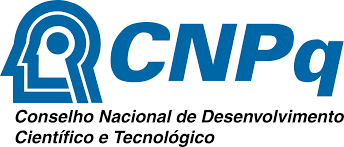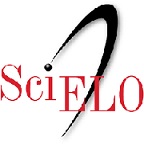Submissions
Submission Preparation Checklist
As part of the submission process, authors are required to check off their submission's compliance with all of the following items, and submissions may be returned to authors that do not adhere to these guidelines.- The file must be in Microsoft Word format (no more than 2MB);
- The author(s) guarantees that the contribution is original and unpublished and that it is not in the process of being evaluated by other journal(s);
- The author(s) is responsible for the content of the article submitted to the journal;
- The journal is not responsible for the opinions, ideas and concepts expressed in the texts, as they are the sole responsibility of their author(s);
- The number of the acceptance protocol of the Ethics Committee (CEUA or CEP) must be in the article, when pertinent;
- Editors have the right to make textual adjustments and adapt the articles to the rules of the publication.
- The author(s) authorize(s) the publication of the article in the journal;
Author Guidelines
Unpublished works can be submitted in the form of a full article, short communication, technical note, case report or review article. Articles submitted in Portuguese or English will be accepted. Articles in English must present an abstract in Portuguese and will have preference in the editorial process for eventual acceptance.
The article cannot be submitted for simultaneous evaluation in another journal;
The article submitted to the BJHEA will be evaluated primarily on its scientific merit;
The Editors and/or any individual or institution linked to their collegiate bodies are not responsible for the opinions, ideas, concepts and positions expressed in the texts, as they are the sole responsibility of the author (or authors);
GENERAL WRITING GUIDELINES
- Full article: Full report of original experimental work of up to 20 pages (in Arial font, size 10 and double spacing). It must contain: Title (Portuguese or English); Summary (Portuguese and/or English); Key words; Introduction; Material and methods; Results; Discussion; Conclusion; References and Acknowledgments (if applicable).
- Short Communication: a concise but complete description of a limited investigation. It follows the same guidelines as full articles, limited, however, to up to 10 pages (in Arial font, size 10 and double spacing).
- Technical Note: evaluation report or proposition and method, procedure or technique that presents association with the areas of the journal, with up to 20 pages (in Arial size 10 font and double spacing). It must contain: Title (Portuguese or English); Summary (Portuguese or English); Key words; Abstract; Keywords; Text (without subdivision but with contents referring to the introduction; methodology; results; discussion and conclusion); References and Acknowledgments (if applicable).
- Review: It is an approach to the state of the art or critical view of matters of interest and relevance to the scientific community, up to 20 pages (in Arial font size 10 and double spacing). It must contain: Title (Portuguese and/or English); Summary; Key words; Development of the proposed theme (with subdivisions in topics or not); Final considerations; References; Acknowledgments (if applicable).
- Case report: report of the characteristics of one or more clinical cases, without intervention established in a scientifically systematized manner. It is limited to up to 14 pages (in font Arial size 10 and double-spaced). It must contain: Title (Portuguese or English); Summary (Portuguese and/or English); Key words; Introduction; Case Report; Discussion; Conclusion or Final Considerations; References and Acknowledgments (if applicable). Only papers that describe, with sufficient data, relevant clinical information that allow the author to diagnose, treat, prevent or control the described condition will be accepted.
TEXT FORMATTING
The text must be typed in Arial font, size 10, double spaced (except Abstract/Abstract, Figures and Tables, which must be produced in single spacing), continuous pagination, in Arabic numerals, centered on the footer, and lines numbered in ascending order ( continuous numbering). The page layout should be A4 paper (29.7 x 21 cm) with margins: top (3cm), left (3cm), bottom (2cm) and right (2cm).
Texts in English must contain an abstract in Portuguese. The file must be sent using the.doc extension. Foreign words must be written in italics while neologisms or unusual meanings must be written in “quotes”.
- Title: It must be precise, succinct and informative, with a maximum of 20 words and based on the main findings presented in the article. Type it in bold, font Arial size 12 and centered.
- Abstract/Abstract: It should briefly clarify the research objectives, methods and main results and conclusions. The text must be justified and typed in a single paragraph, font Arial 10, and single spaced, starting with ABSTRACT (text in Portuguese) or ABSTRACT (text in English) and contain a maximum of 1500 characters with spaces.
- Keywords/Keywords: Display up to six (6) keywords/keywords immediately after the abstract and abstract, in alphabetical order, font Arial 9, lowercase letters, with justified alignment and separated by commas. They must not contain a period.
- Abbreviations, symbols, acronyms and units used throughout the text:
Acronyms and abbreviations, when used for the first time, must be written in parentheses and their meaning in full must be preceded. The use of non-accepted abbreviations should be avoided.
Units of measurement must follow the International System (SI) standards developed by the International Bureau of Weights and Measures (BIPM) [www.bipm.org];
For composite units, use the symbol of each unit individually, separated by only one space.
Write out numbers from zero to nine, unless they are accompanied by a unit of measure.
TABLES AND FIGURES
They must be included in the text, mentioned as a Table or Figure (in full) and numbered in ascending order. Both tables and figures should be inserted as close as possible to their citation. The titles and legends of figures and tables must be short and informative.
- Tables: Must be typed according to the Microsoft® Word menu “Insert Table”, in different cells (tables with values separated by the ENTER resource or pasted as a figure will not be accepted). They are built with only horizontal separation lines in the header and at the end of the table. The title of the table must be positioned above its content, starting with the word Table, followed by the order number in Arabic numerals and period. Description of legends and statistical information included in the table should be detailed in a note at the bottom.
- Figures: Refers to any illustration made up or that presents lines and dots: drawing, photography, graph, flowchart, scheme, etc. Drawings, graphics and the like must be done in black ink, with high clarity. Photographs, in the size of 10 × 15 cm, must be sharp and high-contrast. The figure title is inserted at the bottom of the illustration, starting with the word Figure, followed by the order number in Arabic numerals and dots. Non-original figures must contain, below the illustration, the source from which they were taken, which must be referenced. In graphs, variable designations on the X and Y axes must have capital initials and units in parentheses.
GUIDANCE AND EXAMPLE FOR CITATIONS AND REFERENCES
The text must be formatted in the standard of the International Committee of Medical Journal Editors (ICMJE) - Vancouver - also available for access at the electronic address: http://www.ncbi.nlm.nih.gov/books/NBK7256/
Patrias K. Citing medicine: the NLM style guide for authors, editors, and publishers [Internet]. 2nd ed. Wendling DL, technical editor. Bethesda (MD): National Library of Medicine (US); 2007 [updated 2011 Sep 15; cited Year Month Day]. Available from: http://www.nlm.nih.gov/citingmedicine
The citation “Author-year” described in the ICMJE rules is used. The citation varies according to the number of authors
- For two authors, the surname of both is cited, separated by “and” and the year, when at the beginning of the citation, and the surnames separated by a semicolon when in parentheses, at the end of the citation, followed by the year.
Example: According to Santos and Marco (2010) or (Santos; Marco 2010)
- For more than two authors, the first author's surname must be mentioned, followed by the expression et al. and the year.
Example: Silva et al. (2020) or (Silva et al. 2020)
- When dealing with several works by the same author, with the same date, lowercase letters are used in the citation, in alphabetical order, following the date, to differentiate the various publications in the bibliographic list.
Example: In this way Cardoso (1999a)... already Cardoso (1999b)
REFERENCES
- At least 70% of the references must be from articles published in the last ten years, always seeking to reference the articles published in full in indexed journals.
- References from books, annals, internet, theses, dissertations, monographs must not exceed 30% of the total.
- In Vancouver style the references must be aligned to the left margin, in single space between lines. Authors are referred by surname starting with a capital letter followed by the first letters of the name, without the use of a period.
Example: Iverson C
- When there are up to six authors, refer to the authors, separated by a comma.
Example:
Hallal AH, Amortegui JD, Murray PR, Rosenthal KS, GS Kobayashi, Pfaller MA.Microbiologia médica. 4a ed. St. Louis: Mosby; 2002.
- When dealing with more than six authors, reference is made to the first six authors followed by a comma and the Latin expression et al. no italics
Example:
Iverson C, Flanagin A, Fontanarosa PB, Glass RM, Glitman P, Lantz JC, et al. American medical association manual of style. 9th ed. Baltimore: Williams & Wilkins; c1998. 660 p.
In general, for authorship, reference the author(s) surname(s) in full with the first letter in capital letters and first name initials (except for names of Spanish origin, in which the last two surnames are included), without a comma between surname and first name initials and without dot between first name initials. Authors' initials cannot contain spaces. The term "et al." it must not be in italics or preceded by a comma.
When the consulted document does not have authorship, editor or translator, start the bibliographic reference by title.
- Author with family designations such as Jr, Sr, 2nd, 3rd, 4th, place family rank designations after initials without punctuation and convert Roman numerals to Arabic ordinals.
Examples:
Vincent T. DeVita, Jr. becomes DeVita VT Jr.
James G. Jones II becomes Jones JG 2nd
John A. Adams III becomes Adams JA 3rd
Henry B. Cooper IV becomes Cooper HB 4th
- Books as a whole:
In the case of book citations, insert the name of the author (authors), title of the publication, edition of the book, place of publication, publisher and year. It is only necessary to indicate the edition from the second onwards, using an abbreviation in Arabic numerals and abbreviation, example: 2nd ed. If the publication has more than one volume, add the number right after the book title. Pagination of the referenced part (when applicable).
Example:
Guyton AC, Hall JE. Treatise on Medical Physiology. 10. ed. Rio de Janeiro: Guanabara Koogan; 2002. 1014 p.
When editor and place cannot be indicated in the publication, both expressions, abbreviated, and between square brackets are used. [S.I: s.n.]
-
Part of the book:
Author(s) (Last name in full) First name(s) (Initials). Title of the referenced chapter. Add the term In: when the authorship of the chapter is different from the authorship of the book as a whole. Author(s) of the book. Book Title: (subtitle if any). Edition (from the 2nd). Place of publication (city): Publisher; year of publication. Pagination of the referenced part.
Examples:
Wünsch Filho V, Koifman S. Work-related malignant tumors. In: Mendes R. Pathology of work. 2. ed. São Paulo: Atheneu; 2003. Vol. 2, p. 1002-19.
Bess FH, Humes LE. Fundamentals of Audiology. Domingues MA, translator. 2. ed. Porto Alegre: Artmed; 1998. Chapter 7, Amplification and Rehabilitation for the Hearing Impaired; for. 233-73.
- Books in electronic format in its entirety:
For books available on the internet, the word “internet” must be added after the title and between square brackets. Information on the access date will be presented after the year of the work, following the sequence of year, month and day, accompanied by the address of the website where it is available, without the full stop.
Example:
Pompéia R. O Ateneu [internet]. 16. ed. São Paulo: Attica; 1996 [accessed 2021 set 17]. 147p. Available at: http://www.dominiopublico.gov.br/download/texto/bv000297.pdf
- Theses and Dissertations:
To cite monographs, insert the name of the author, followed by the title of the material (if it has a subtitle, it should also be included), what is the [type of content], the city of publication, the institution and the year in which it was published.
Example:
Arvelino ECSS. Artistic and cultural production of research professors from the Visual Arts, Design, Music and Theater departments at UEL [course conclusion work]. Londrina: State University of Londrina, Librarianship Course, Department of Information Sciences; 2007. 87 p.
- Journal articles:
The names of the journals should be abbreviated according to the journal itself, at the address:
https://www.nlm.nih.gov/archive/20130415/tsd/serials/lji.html or on the website:
http://portal.revistas.bvs.br for Latin American magazines.
Insert Author(s). Title of the article. Abbreviated journal title, year and month of publication, number and pages. When the pages of the consulted article have matching numbers, eliminate the same digits (p. 112-116 to use 112-6).
Example:
Petitti DB, Crooks VC, Buckwalter JG, Chiu V. Blood pressure levels before dementia. Arch Neurol. 2005 Jan;62(1):112-6.
- Article available on the Internet:
Insert Author(s). Title of the article. Abbreviated journal title [support]. Publication date [access date with the expression “accessed in” year month day]; volume(number):start-end pages or [approximate number of pages]. Email address with the expression “Available at: ”
Example:
Pavezi N, Flores D, Perez CB. Proposition of a set of metadata for the description of photographic files considering Nobrade and Sepiades. Transinf [Internet]. 2009 [accessed in 2021 set 17]; 21(3):197-205. Available at: https://www.scielo.br/j/tinf/a/nxnvtNm3qwtxGrJ4HN8Dq3C/?format=pdf&lang=pt
- Congresses and meetings:
Author(s). Title of the work. In: Type of publication and title of the event; year month day of the event; city, country of the event. City of publication: publisher or institution responsible for the publication; year of publication.
Example:
Alencar MM, Cruz GM, Tullio RR, Corrêa LA, Sampaio AAM, Barbosa PF. Live weight, slaughter age, length of confinement and carcass characteristics of young cattle from crosses of adapted and non-adapted breeds. In: Annals of the 44th Annual Meeting of the Sociedade Brasileira de Zootecnia, 2007 Jul 24-27; Jaboticabal, BR. Jaboticabal: Brazilian Society of Animal Science; 2007.
- Newspaper article
In addition to the author and name of the article, it is also necessary to include the name of the journal where it was published, as well as the year of publication, followed by the section, page number and column, if any.
Example:
Tynan T. Medical improvements lower homicide rate: study sees drop in assault rate. The Washington Post. 2002 Aug 12;Sect. A:2 (col. 4).
- Data base
It is also very common to use information in an online database. In this case, insert the name of the institution or entity that owns the base, followed by the name of the base, place of publication, editor of the base, date of creation of the base and of the consultation, and the electronic address.
Example:
BIREME - Latin American and Caribbean Health Sciences Information Center. LILACS: Latin American and Caribbean Health Sciences Literature [Internet]. São Paulo: BIREME. 2019 [updated 2019 Mar 11; cited 2019 Mar 19]. Available from: http://lilacs.bvsalud.org/
- Site
Insert the name of the author or entity, followed by the name of the portal, place of publication, access date and email address. If there are specific sections you wish to cite, include their names right after the site title.
Example:
Coordination for the Improvement of Higher Education Personnel. Sucupira Platform [Internet]. Brasilia: CAPES; c2016 [cited 2019 Mar 20]. Available from: https://sucupira.capes.gov.br/sucupira/public/index.xhtml
- Legal Documents (laws, ordinances and ordinances) Vancouver DOES NOT PROVIDE guidelines for legal documents outside the United States. It is recommended to use ABNT NBR 6023 for this type of reference.
Location (Country, State or City). Title (specification of legislation, no, date). Indication of the official publication. Publication date (year month day); Section. Home-end pages.
Examples:
Brazil. Ministry of Health. Ordinance No. 1.884, of November 11, 1994. Preparation of physical projects [for health care establishments], Official Gazette [of] the Federative Republic of Brazil. 1994 Dec 15; Section 1. p.19523-49.
Brazil. Law n.8.069, of July 13, 1990. Provides for the Statute of Children and Adolescents and other measures. [Internet]. 1990. [cited 2021Set 17]. Available at: https://www.planalto.gov.br/ccivil_03/Leis/L8069.htm
Artigos
Compreendem textos que contenham relatos completos de estudos ou pesquisas concluídas, matérias de caráter opinativo, revisões da literatura e colaborações assemelhadas.
Copyright Notice
Authors who publish in this journal retain the copyright and grant the journal the right of first publication, with the work simultaneously licensed under the Creative Commons Attribution License which allows for sharing the work with acknowledgment of authorship and initial publication in this journal
Privacy Statement
The names and email addresses entered in this journal site will be used exclusively for the stated purposes of this journal and will not be made available for any other purpose or to any other party.








